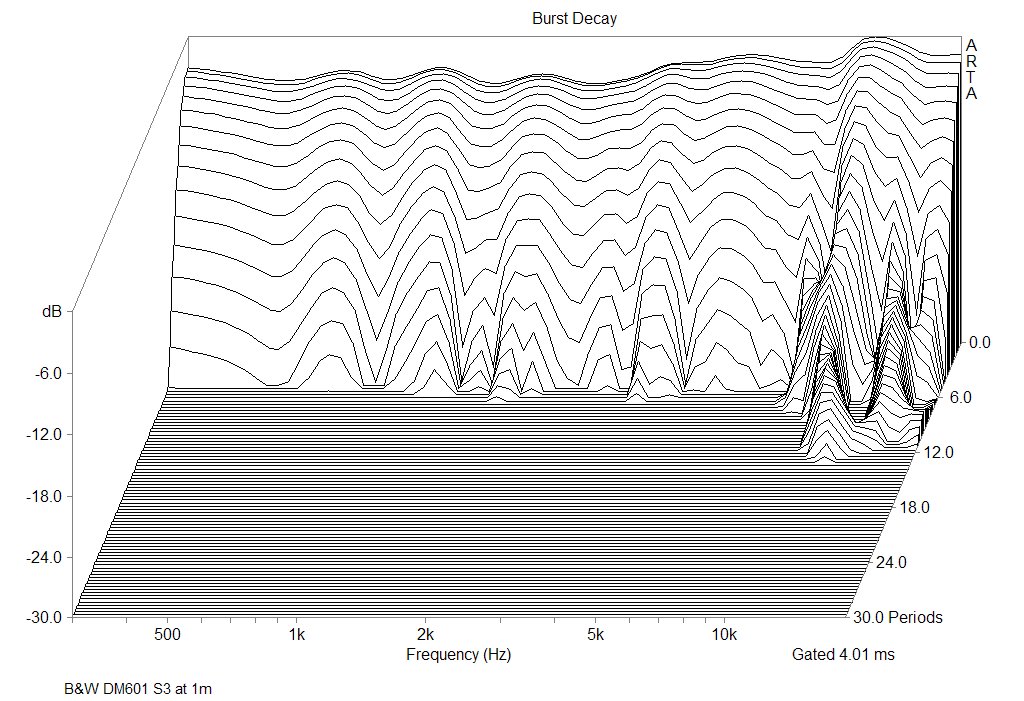B&W DM601-S3 Crossover Upgrade

A friend asked me for an advice about bookshelf loudspeaker system at affordable price, with a
natural tonality and good
overall sound balance. The first model that came to my mind was B&W 601 - a highly rated by many users as they deliver a great
sound for
a budget price.
My friend bought a pair of second hand B&W 601 S3. His first impressions were very
favorable. However after extensive listening sessions he noticed some
recession in the midrange and bass with too much detailed upper end. The midrange itself is slightly muffled with a lack of consistence.
That's why I decided to take a look at the construction and, if it is possible to try to improve the overall sound.

My first step, of course, was to perform a detailed tests
of both drivers. The
measurements can be found here:
Tweeter -
B&W ZZ13137
Midwoofer -
B&W ZZ12831
Both drivers show very good linearity. The tweeter unit has
an excellent off axis frequency response.
The midwoofer has too high electrical factor Qts for
bass-reflex enclosure like this. It results a peak in the
80-100Hz area, which is not too offensive and needs no
special treatment.
The crossover PCB is directly attached to the terminal panel
by two nuts and can be easily unmounted.
To detach the cables from the loudspeakers, the midwoofer
must be removed and through its hole there is an access to
the tweeter's connector. The crossover upgrade, described
below, can be performed even without any driver
disconnection.


Here is the schematics of the crossover. The tweeter section is
the usual one B&W apply in most of the systems in this class with
crossover frequency . The woofer was cut with 6dB/Oct low pass
filter. We can see two empty component places for more complex midwoofer
crossover, marked C3 and R3, which probably were abandoned in the
development process or intended for other models.
Here are the factory specifications of the B&W DM601-S3
![]()
The Measurements


The left graphics show the measurements of the upper(tweeter) and
lower (woofer and midwoofer) section of the system, where the test
signal is applied to the input terminals with enabled bi-wiring
(external junctions were removed). The acoustical crossover
frequency is 4 kHz. Although the tweeter has third-order
filter, its slope was lowered by adding the 1.8 Ohm resistor and the
curves of the midbass and tweeter has almost the same declivity in
the crossover point.
On right we can see the off-axis response, which is very good with
a huge ultrasonic peak of the metal dome tweeter.


The burst decay looks good, and the impedance curve is excellent up to about 10khz. The lowest impedance point is about 3 Ohm at 14 kHz, which is mentioned in the manufacturer's brochure.
Crossover Upgrade


Here is the schematics of the upgraded crossover. The low-pass
filter was changed to second order Bessel, tuned at about 2 KHz. The
resistor R2 was removed from the high-pass section for a slope
improvement . Important: the tweeter is connected with inversed
polarity.
The conversation procedure is simple:
- Replace the resistor R1 with 3.3 Ohm one. Thee quality of this
component is important. I used Mundorf M-Resist 5W.
- Remove
the C1 4.7 uF capacitor and put it in the C3 place. At the C1 slot
put the best 3.3 uF film capacitor you can afford for this upgrade
- Replace R2 with a junction. The removed 1.8 Ohm Resistor solder into
R3 place.
- Change the places of the black and red wire
The Result


Although the crossover modification doesn't look significant, the
way how it work has changed dramatically. Both midwoofer and
tweeter no longer work in the area of high distortion nor unwanted
resonances. In the factory crossover we can see, that there is an
insufficient decay at the main tweeter's resonance of 2 KHz. New
crossover improves this decay with 10dB.
The off-axis measurements show an excellent linearity in the whole
frequency range.


Reducing the unwanted midwoofer's response above the crossover point decreases significantly the mess at about 10KHz. The impedance unevenness was improved too - the lowest impedance is 4.4 Ohm at 200Hz.
Listening Impressions
The most important, of course, is how the improved crossover
sounds like. If I must describe it in one word, it will be
"clarity". The vocals are full-blooded without cheap adornment.
The descants are tempered and musical. The soundstage is
realistic plausible.
All the above at the cost of four components and one hour of
work ...

